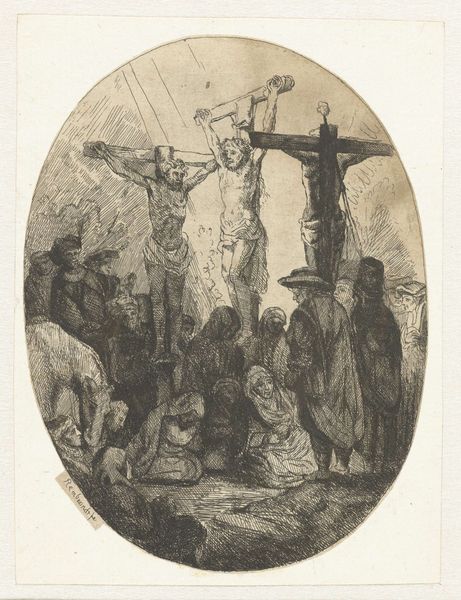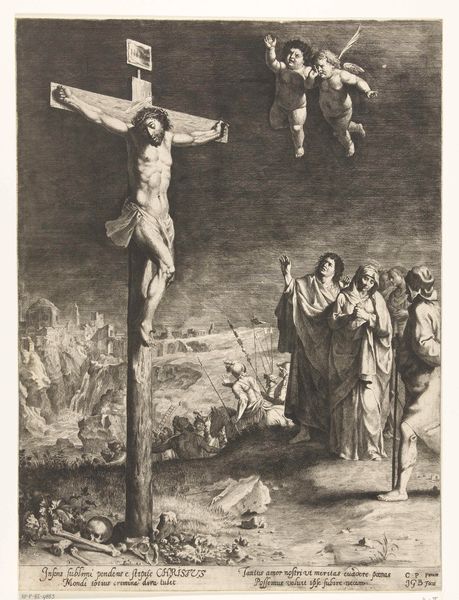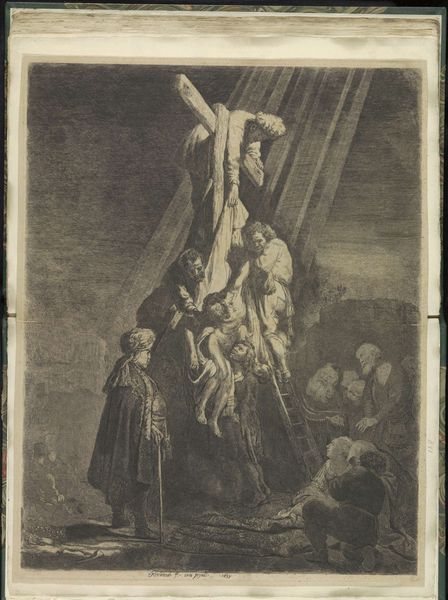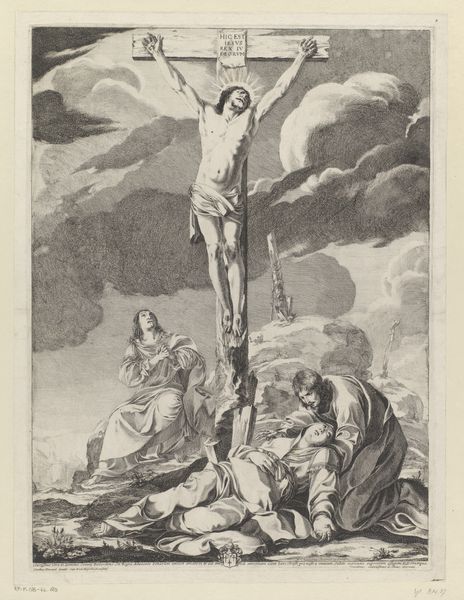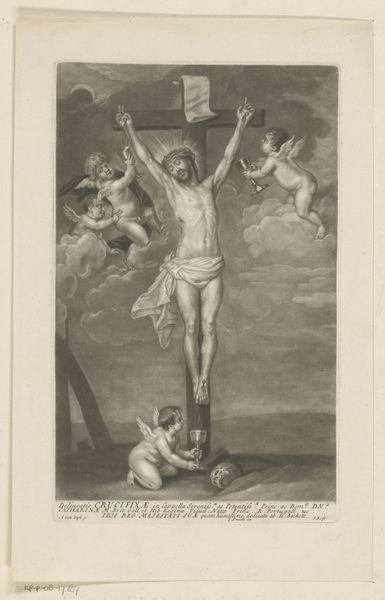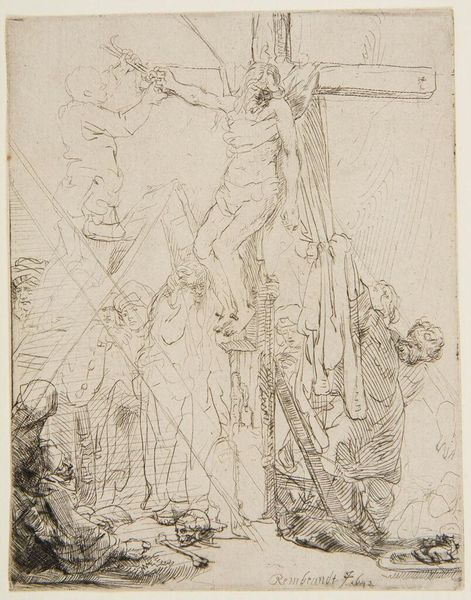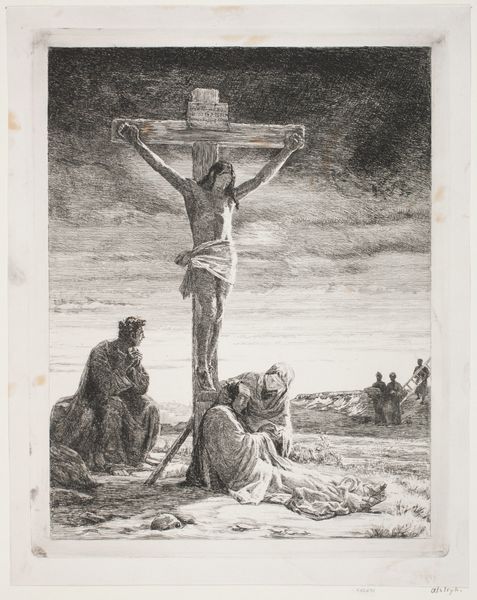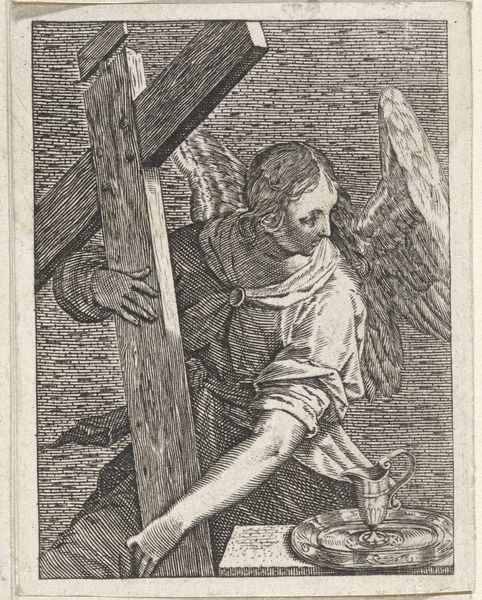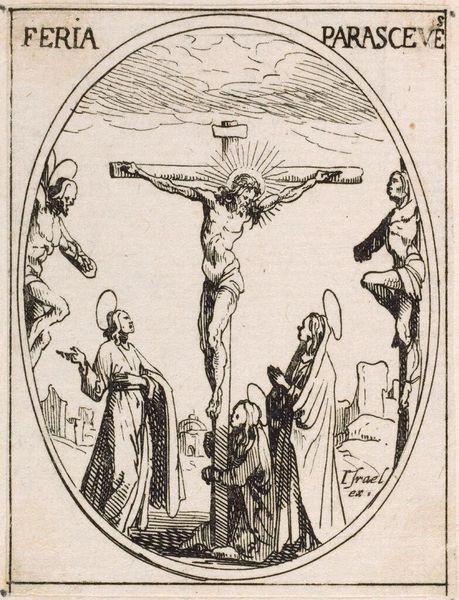
print, engraving
# print
#
caricature
#
old engraving style
#
history-painting
#
engraving
Dimensions: height 158 mm, width 95 mm
Copyright: Rijks Museum: Open Domain
Curator: Immediately striking, wouldn't you say? There’s such harsh contrast, such darkness here. The scene almost feels biblical, yet undeniably satirical. Editor: Indeed. What we are seeing is a print made in 1784 entitled, "Spotprent op Rijklof Michael van Goens". Jan Gerard Waldorp is credited as the artist for this engraving, now housed here at the Rijksmuseum. The central figure seems to be displayed for ridicule. Curator: Absolutely. Note the man positioned high atop the post with the sign that appears to condemn him. And is that an eagle looming above? A potent symbol often associated with authority, or perhaps a predatory threat here? Editor: Precisely. The sign accuses him of being a tool of political discourse or system connected to Amsterdam. It points directly to the volatile political climate of the era, specifically the Patriot vs. Orangist factions, doesn't it? The Dutch Republic was facing significant internal strife at the time. Curator: Exactly! We see it played out in the characters surrounding him, almost theatrical in their gestures and garb. Consider also the words at the very bottom, "Ecce Proditor"—"Behold the traitor!" in Latin. The choice to use Latin connects him to Biblical depictions of betrayal and punishment. Editor: Yes, there's a visual language at work that’s both universal and timely. That figure on the right with his bloated physique… his pompous attitude almost reeks of corrupted power. Note how the placement of the characters in relationship to one another reinforces the scene as well. It is more than just a portrait. Curator: Absolutely. Each figure serves as a symbolic embodiment of political and societal tensions present in the Netherlands at the time, from anxieties around centralized power, public sentiment, and who is the oppressor and who is oppressed. It captures a pivotal moment when the power of the established order was beginning to fray, and popular opinion was turning against it. Editor: Indeed. The power of such visual imagery is quite lasting and resonates through the centuries, as an enduring example of using caricature and symbolism as a potent tool for political commentary. Curator: A complex and very poignant rendering, reflective of this time period, I would say. Editor: Agreed. An exemplary study in symbolism meeting socio-political critique.
Comments
No comments
Be the first to comment and join the conversation on the ultimate creative platform.
